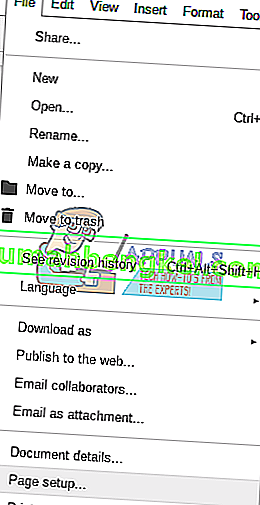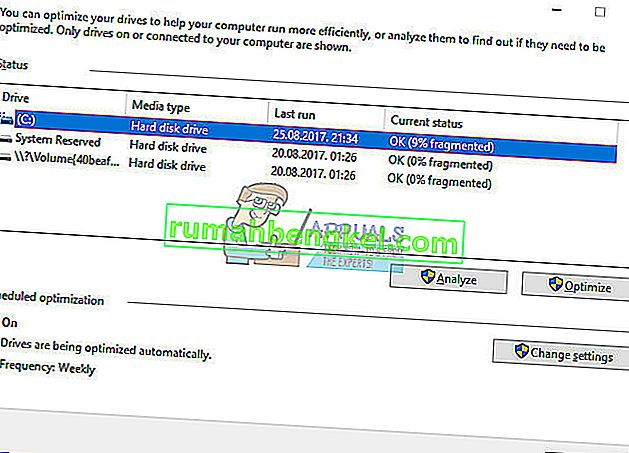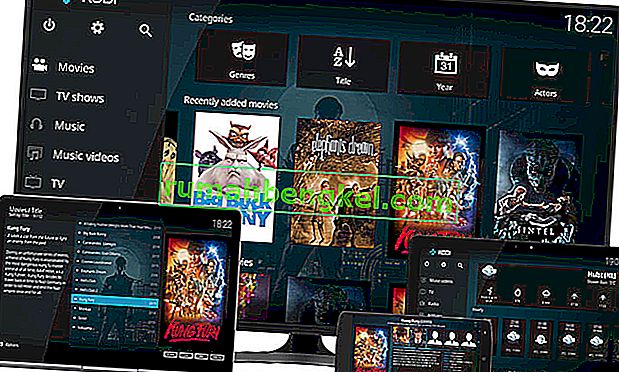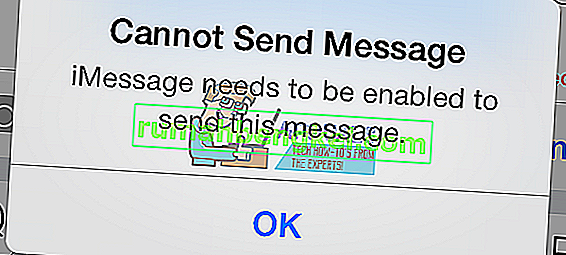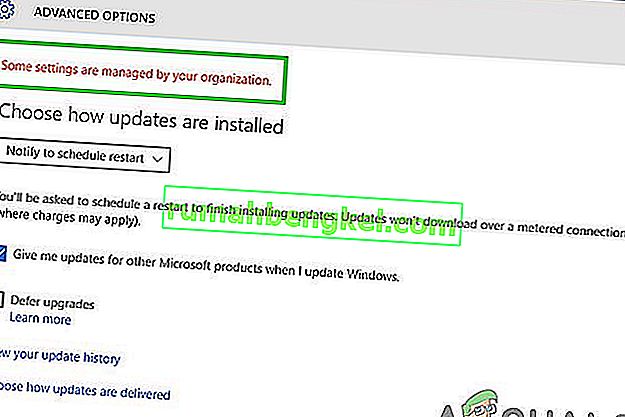OBS Studioは、ユーザーがゲームや画面を専門的にストリーミングできるようにするオープンソースソフトウェアです。macOSとWindowsオペレーティングシステムの両方のプラットフォームがあります。OBSは通常、従来の画面記録ソフトウェアと比較して画面共有をより詳細に制御したいハイエンドのゲーマーによって使用されます。

ユーザーが画面をオンラインで共有しようとすると「黒い画面」が発生するという問題がOBSをかなりの間悩ませてきました。この問題は主に、2つのグラフィックスオプション、つまり専用と統合の両方があるWindowsプラットフォームおよびシステムで見られます。この記事では、この問題が発生する理由とそれを解決するための手順について、すべての解決策を検討します。
OBS Studioで黒い画面が発生する原因は何ですか?
広範な調査を行い、OBSを使用してストリーミングするときに黒い画面が発生するすべてのユーザーのケースを分析しました。私たちの分析に基づいて、私たちは問題を引き起こしているかもしれないいくつかの異なる犯人に出くわしました。それらのいくつかはここにリストされています:
- 専用グラフィックス干渉:アプリケーションまたはゲームを開始するときはいつでも、オペレーティングシステムは、専用グラフィックスカードからリソースを割り当てるか、通常のマザーボード統合グラフィックスを通じてリソースを割り当てるかを決定する必要があります。この選択は、実行中のメカニズムに関して悪影響を与える可能性があり、OBSは適切にストリーミングできない可能性があります。
- 管理者権限: OBSは画面全体を共有しているため、コンピューターがアクセスを制限し、コンテンツを表示できない場合があります。通常、管理者権限でアプリケーションを起動するだけで、問題は即座に解決されます。
- 32ビットアプリケーションと64ビットアプリケーションの競合: OBSには、アプリケーションの2つのバージョン、つまり32ビットと64ビットがあります。コンピュータにインストールされているオペレーティングシステムの種類に応じて、正しいバージョンを選択する必要があります。そうでない場合、アプリケーションは互換性がなく、正しく機能しません。
- 互換性の問題: OBSが最新バージョンのWindowsと互換性がない場合もいくつかありました。ここで、互換モードでアプリケーションを起動すると、アプリケーションが強制的に起動して期待どおりに動作します。
- オーバークロック:オーバークロックはPCのパフォーマンスを向上させる可能性がありますが、アプリケーションに悪影響を及ぼします。オーバークロックを無効にして、問題が解決するかどうかを確認できます。
- 競合するソフトウェア:他の同様のキャプチャソフトウェアがバックグラウンドで実行されている可能性もあります。このソフトウェアはOBSと競合し、リソースの競合を引き起こす可能性があり、これは間違いなくOBSの誤動作を引き起こし、正しく機能しません。
- キャプチャオプション: OBSでは、フルスクリーンや特定のウィンドウなど、いくつかのキャプチャオプションを使用できます。コンテンツをキャプチャするときは、正しいオプションを選択する必要があります。
- エラー状態のPC:PCがエラー状態になる可能性を完全に排除することはできません。これは通常、長時間コンピュータをシャットダウンしていないときに発生します。電源を入れ直すだけで問題が解決します。
必ず上からの解決策に従い、効果的に作業を進めてください。それらは難易度と効率の観点から注文されます。幸せなトラブルシューティング!
解決策1:コンピューターの電源を入れ直す
広範囲にわたるトラブルシューティングを開始する前に、コンピュータの電源を再投入する価値があります。電源を入れ直すだけでOBSの黒い画面が瞬時に解決される場合がいくつかありました。電源を入れ直すには、コンピュータを完全にシャットダウンし、電源も取り外す必要があります。これにより、コンピューターはすべての一時構成を強制的に削除するため、コンピューターを再起動するたびに、すべてが初期化されます。
- コンピュータを適切にシャットダウンします。
- 電源がオフになったら、コンセントを外すか、ノートパソコンを使用している場合はバッテリーを取り出します。
- 今プレスとホールド数秒間電源ボタンを押します。これにより、すべての電力が確実に排出されます。
2〜4分待ってから、すべてを元に戻し、問題が解決するかどうかを確認します。
解決策2:OBS Studioの正しいバージョンを選択する
OBSには通常、32ビットと64ビットの2つのバージョンがあります。Windowsオペレーティングシステムも2つのバージョンで出荷されるため、ソフトウェアは2つのバージョンで出荷されます。32ビットプロセッサと64ビットプロセッサの大きな違いは、実行可能な1秒あたりの計算数であり、タスクを完了する速度に影響します。このソリューションでは、OBSのインストールディレクトリに移動し、ビットバージョンを確認した後、ソフトウェアの正しいバージョンを選択します。
まず、コンピュータにインストールされているオペレーティングシステムのバージョンを確認します。
- [ このPC ]を右クリックし、[ プロパティ ] を選択します。

- コンピュータのプロパティで、システムの小見出しの下を確認し、システムタイプの前のタイプを確認します。オペレーティングシステムの種類を書き留め、以下の手順に進みます。

次に、OBSのインストールフォルダーに移動し、コンピューターのビットアーキテクチャーに応じて正しいバージョンのアプリケーションを起動します。
- Windows + Eを押して、ファイルエクスプローラーを起動します。次に、ダイアログボックスでOBSを検索し、次の図に示すようにファイルの場所を開きます。

- OSのビットバージョンに応じて、正しいバージョンのアプリケーションを選択して開きます。問題が解決したかどうかを確認します。
解決策3:互換モードを変更する
アプリケーションに存在する互換モードオプションの混合レポートを受け取りました。一部のユーザーによると、Windowsの最新バージョンはアプリケーションでサポートされていないため、互換性をWindows 7に変更する必要があり、一部のユーザーは互換モードを無効にすると問題がすぐに解決することを報告しました。ここでは、両方の方法を試して、どちらが効果的かを確認できます。表示されない場合は、設定をデフォルトに戻して、他のソリューションを続行してください。
- Windows + Sを押してOBSを検索し、アプリケーションを右クリックして[ ファイルの場所を開く ]を選択します。

- 次に、実行可能ファイルを右クリックし、[ プロパティ ]を選択します。

- プロパティでたら、選択互換性 ]タブをし、チェックオプションの互換モードでこのプログラムを実行します。これで、Windows 7または8を選択できます。

- 変更を保存して終了します。次に、アプリケーションを起動して、問題が解決したかどうかを確認します。
解決策4:管理者権限を付与する
画面またはゲームを正しくストリーミングできない理由のもう1つの問題は、アプリケーションに適切な管理者権限がないためです。OBSは実質的にすべてのコンテンツとコンピューターの使用状況をオンラインで共有しているため、管理者権限を付与することが不可欠です。このソリューションでは、それを行い、これで問題が解決するかどうかを確認します。そうでない場合でも、オプションを常にオンにしておくようにしてください。
- 前のソリューションで行ったように、OBSの実行可能プロパティに移動します。
- 今すぐクリックし互換性タブとチェックのオプション管理者としてこのプログラムを実行。

- 変更を適用して終了します。コンピュータを再起動して、OBSを再度起動します。問題が解決したかどうかを確認します。
解決策5:リソースに適切なGPUを選択する
私たちが遭遇したもう1つの興味深い現象は、使用しているキャプチャに応じて正しいGPUを選択しないと、黒い画面を含むいくつかの問題が発生することです。選択したディスプレイに応じて選択するGPUの内訳は次のとおりです。
- ゲームキャプチャ:専用グラフィックス(NVIDIAまたはAMD)。
- モニター/ディスプレイキャプチャ:Intelの標準GPU
Note: This solution is only for users who have a dedicated graphics card installed on their computer.
Here we will signify the methods on how to cater to both the situations. Make sure that you follow them according to your case.
- Right-click anywhere on your screen and select NVIDIA Control Panel.
- Once in the control panel, navigate to Manage 3D settings and click on Program Settings.
- Once in program settings, select the OBS display capture. If you are not able to find the entry, click on Add and look up the software by navigating to its installation directory and selecting the executable from there.

- Now according to the type of capture you are doing (game or monitor), select the correct graphics processor for the program. In the case down below, NVIDIA’s processor is selected.

- Save changes and exit. Now restart your computer and launch OBS again. Check if the black screen issue is resolved.
Solution 6: Changing Drive Permission Settings
If your OBS is installed in your primary drive (C), there are chances that probably even your user might have not have full permissions to edit and modify its contents. This is the usual case and the reason why a conventional user is not allowed access to the drive is because of security reasons because all the core operating system files are present. However, according to some user reports, changing the ownership settings of the drive solved the issue instantly. Make sure that you are logged in as an administrator before following this solution.
- Press Windows + E to launch the File Explorer. Now right-click on your C drive (or whichever drive is set as your main operating system disk) and select Properties.
- Select the Security tab and then click on Edit in front of permissions.

- Now select the option of Authenticated users and select the checkbox of Full control.

- Press Apply to save changes and exit. Restart your computer and start OBS again. Check if the issue is resolved.
Solution 7: Changing Settings of OBS
Another workaround to consider is changing some specific settings of OBS. Usually, OBS allows users to set the configurations according to their own preferences or will. However, in some cases, the custom settings might conflict with the software and cause the black screen. Here we have listed down some of the changes in settings that you have to do in order for OBS to run in optimal settings.
Mode: *Select according to your preference* Screen: *Select according to your game* Priority: *Usually the default one suffices* Sli/crossfire: Check (You can also try unchecking this one later) Force scaling: Uncheck Transparency: Uncheck Framerate lock: Uncheck Record cursor: Check Anti-cheat: Uncheck Overlays: Uncheck
After you have made changes to the settings of OBS, restart it and check if you can stream your screen/games properly without any issues.
Note: You can also change the mode from “Capture any fullscreen application” to “Capture specific window“.
Solution 8: Enabling Multi-adapter compatibility
OBS has a setting of Multi-adapter compatibility which is meant for computers involving SLI or Crossfire technology. SLI/Crossfire is technologies by NVIDIA/AMD which allows users to connect two graphics cards instead of one and utilize them both in your gameplay or applications. Enabling this feature seemed to have fixed the issue of black screen in OBS instantly.

The funny thing is that this fixed the black screen in computers that don’t even have SLI/Crossfire technology installed. To conclude, we can safely say this is a bug in OBS and you have to enable multi-adapter compatibility whether or not you have SLI/Crossfire. You can easily enable this option by selecting the stream and clicking on the gears icon. A new window will pop up from where you can check the option.
Solution 9: Disabling Overclocking
Overclocking allows you to increase the clock rate of your processor until it reaches the threshold temperature set by the manufacturer. Once it reaches the temperature, the clock speed returns back to default so it is cooled down. After it reaches the optimal temperature, its clock speed is increased again and the cycle continues. Overclocking allows users to have better framerates and performance but they aren’t without their share of issues.

We observed that PCs that had overclocking enabled were having the black screen issue in OBS. You should try disabling overclocking and also overclocking related software such as MSI Afterburner and try launching OBS again. If the black screen issue is resolved, consider disabling overclocking for good whenever you are using OBS.
Note: Also try disabling Overlay from GeForce Experience and Windows game bar features. Take into account any additional software features which may provide additional controls over games or video.
Solution 10: Checking for conflicting software
Another reason why you might be experiencing the black screen on your OBS software is that you have additional software running in the background which is also related to screen capture and video recording. This is a very common scenario for users where they ‘think’ that the other third-party software is not running but in reality, it is in the background. In this solution, we will go through all the different software installed on your computer and uninstall all extra software which might be causing the issue.
- Press Windows + R, type “appwiz.cpl” in the dialogue box and press Enter.
- Once in the application manager, search for any recording software which you might have installed on your computer. Right-click on it and select Uninstall.

- You should also check your taskbar for any extra applications running in the background. Right-click on each entry and exit the application.

- After you are absolutely sure that no program is running the background, run OBS again and check if the issue is resolved.
Solution 11: Reinstalling the application
If all the above methods don’t work and you are still unable to stream your game/screen successfully using OBS, you should consider reinstalling the application entirely. It is possible that you have a corrupt/outdated copy with issues with several modules. All your preset configurations will be lost during this solution so make sure that you have saved all the work that you need.
- Press Windows + R, type “appwiz.cpl” in the dialogue box and press Enter.
- Once in the application manager, search for OBS, right-click on it and select Uninstall.

- Select both options (one of them will be preselected) and click on Uninstall.

- Restart your computer. Now navigate to OBS Studio’s official website and download the latest version from there. Install it and check if the issue persists in the fresh copy.

